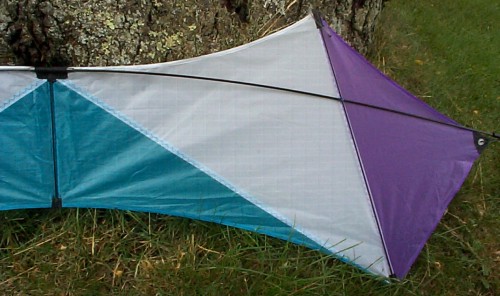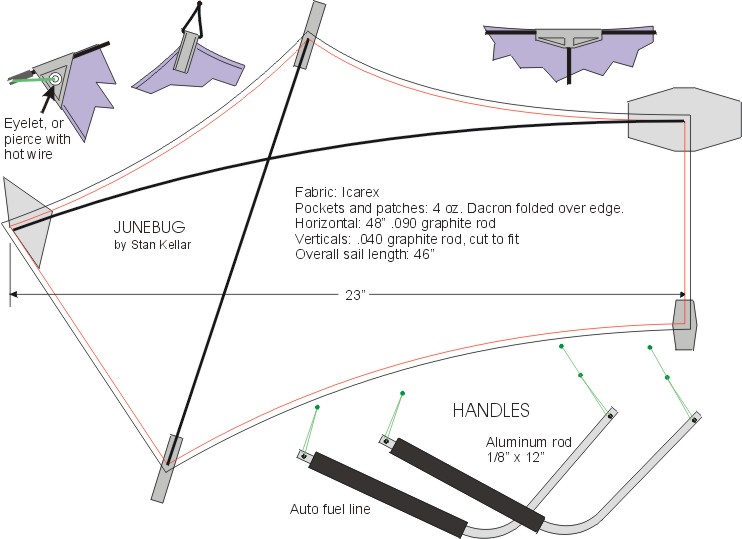|
|
|
|
The first version of this design is a mini, a bit under 4 feet long, made of Icarex and 080 graphite rods with a 48" 090 graphite rod bent to tension the sail. Most edges are catenary cut to spread the tension along the edges to reduce the noisy buzzing of Dacron. Attachment loops at the ends of the vertical spars are connected to 30# 30 foot lines with light handles made of 1/8 inch aluminum rod with automotive fuel line for grips. Flight is touchy unless the wind is smooth, but spins, reverse flight and hovering are much like with the larger quads. The tiny lines are best wrapped on two winders to avoid a windblown tangle. Total cost with lines was about $12. The lines could be 12 feet longer and the leading edge might use a thin rod through the hem between the verticals to prevent noise on larger versions. Other fliers of this kite lose interest very quickly, but I enjoy it. Click the photo for a better view.
Junebug is a fun little kite and is like flying a quad-line fighter. It tends to flit about and requires patience to fly, so don't expect it to fly like a big quad. It likes smooth light air such as comes off a lake or bay. I enjoy it because it's quick to set up and so small it stores anywhere while assembled.
Start by printing the pattern on your printer as tiled pages, stick the sheets together and cut them out. If your prints are the wrong size just resize the drawing to get the 46" finished length. The kite can be cut from a single piece of fabric, but to add some color design simply hot cut the various colored bits and tack them together with a glue-stick and stitch the simple lap seam. The edge is hot-cut at the outer black line and folded at the red line before straight stitching. The Dacron pieces are hot cut and folded in half and wrapped around the hemmed sail edges. The horizontal rod is tensioned with a loop from nock to wingtip. Just tighten enough to get the curve to resemble the drawing. The three verticals are cut to fit snugly in their pockets to tension the sail and then are capped with ¼" pieces of wire insulation to protect the pocket. The stiffness of the long spar seems to affect controllability. If the kite takes off well but doesn't steer well, or just slides sideways across the wind, try a spar with less stiffness.
The handles can be made from about anything, but the grips should be fuel line from a 1971 or earlier Volkswagen Westphalia camper. Spectra 30-pound line is more than strong enough for flying lines.

![]()
